For many years I only grew herbs and greens in my vegetable garden during winter. Summer veggies seemed more fun and winter became a time of dormancy for me and my garden. That all changed after I planted broccoli for the first time. It quickly grew into a luscious bed of edible heads. But the best surprise was how long they lasted. As long as I kept snipping off the newly developed side shoots before they flowered, we ate nutritious broccoli for months. Since then I have grown many members of the Brassica family and along the way learned a few things about this prolific and interesting family.
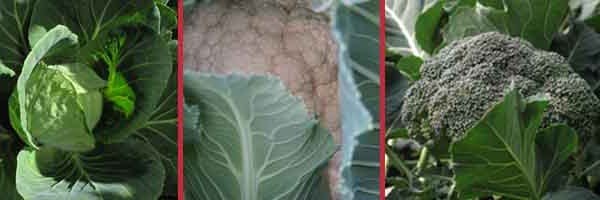 Now is the time to sow seedlings for autumn and winter.
Now is the time to sow seedlings for autumn and winter.
Secrets of Brassicas
Kale, mustard, broccoli, cauliflower, Brussels sprouts, and more, are all Brassicas. Probably the only other vegetable family with a wider diversity of shapes and sizes is the Cucurbit or squash family.
As Brassicas are heavy feeders, enrich the soil with compost and add a slow release, balanced fertiliser before planting.
All Brassicas prefer more alkaline soil and benefit from some lime being added before planting. This also helps prevent club root disease, a fungal disease affecting the Brassica family. Rhubarb leaves, which are very high in oxalic acid, help to prevent club root. Water the ground with a rhubarb drench (see below) before sowing seeds or transplanting seedlings.
Crop rotation also reduces chances of club root developing. Brassicas should not follow one another in the same spot for at least two years. When Brassicas have finished bearing, pull the entire plant out, roots and all, and compost it. Leaving the stumps in the ground encourages club root.
Companions: All Brassicas love growing alongside aromatic and flowering plants such as rosemary and sage.
The Four Stages of Brassica Growth
Some Brassicas, such as kale and mustard, are leafy greens and can be grown as such. Others – particularly broccoli, cauliflower, Brussels sprouts and cabbage – require a little more care. These vegetables all develop buds, either a large single one like cabbage, or a mass of them, like broccoli. These Brassicas have four stages of growth.
In the early stages they concentrate on developing their roots and leaves.
During the second stage, the outer leaves develop.
The third stage is the most important, as this is when the plant builds up nutrients in the outer leaves. The third stage is the time that Brassicas most appreciate being fed some extra food.
Once sufficient nutrients are stored, the plant transfers them from the older outer leaves to the internal buds, which develop very quickly during the fourth stage. Feeding Brassicas during the fourth stage won’t make much difference as the growth is too fast for the roots to keep pumping nutrients to the heads. All the growth is drawn from the outer leaves.
So we need to feed our Brassicas with a balanced diet before the heads start developing. They require a balanced organic fertiliser, such as Talborne Vita-Fruit Flower (3:1:5), as this will help build large, healthy heads and buds.
How to grow cauliflower
Cauliflower, unlike broccoli which continues to produce side heads after the first harvest, is a once-off deal. Despite this, it is worth planting a few in a small vegetable garden as freshly picked cauliflower has a flavour and crunchiness far surpassing your average supermarket offering. Choose from snowy white, purple, to the spiral Romanesque (pictured).
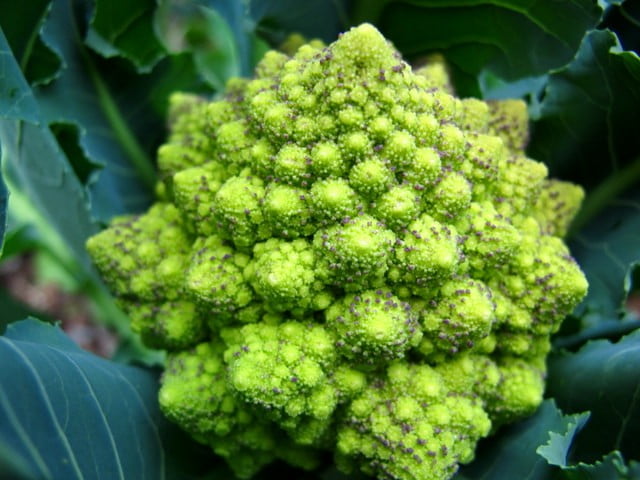
Spiral Romanesque cauliflower
Cauliflower needs constant moisture, rich soil and just the right temperatures to form a good head. Different varieties have differing lengths of maturity, head sizes and resistance to warmer weather. They must be transplanted very gently with as little disturbance to the roots as possible. They produce better heads if grown in a firm soil.
When the heads are a good size (6.5–10 cm in diameter or 2½-4 inches) cover them with some bigger outer leaves to keep them white. Either tie the leaves together over the top or break the leaves and fold them over. Check every few days after doing this to see if they are ready. Heads should be cut when they are compact and firm. Don’t let them become loose or develop individual florets.
How to grow kale
Kale is a quick-growing leafy vegetable. It is very similar to cabbage except it doesn’t form a head in the middle. It is also hardy, easy to grow and is subject to very few pest attacks or diseases. It prefers growing during the cooler months and likes moist conditions.
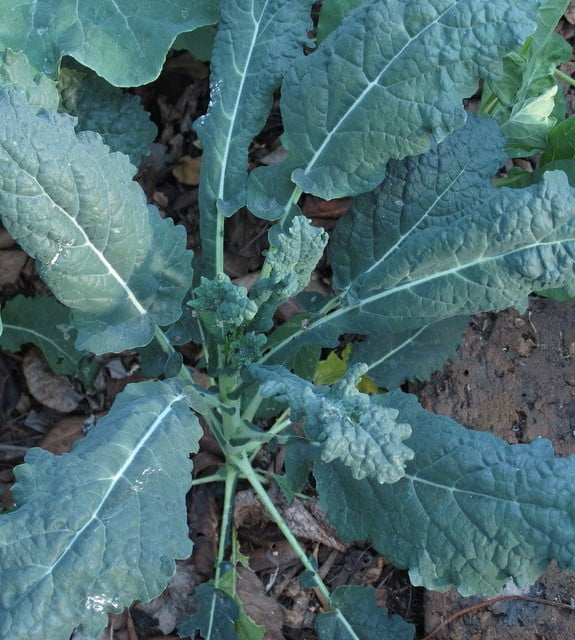 Kale is easily grown from seed and isn’t too fussy about its soil. It prefers full sun, except during the hotter months, when it benefits from some shade. It needs consistent watering and well-mulched soil. Kale grows well with strong-flavoured herbs such as basil, parsley and sage.
Kale is easily grown from seed and isn’t too fussy about its soil. It prefers full sun, except during the hotter months, when it benefits from some shade. It needs consistent watering and well-mulched soil. Kale grows well with strong-flavoured herbs such as basil, parsley and sage.
Kale is not a delicate green, like spinach, which only needs to be cooked for a short time. Kale benefits from being thoroughly cooked, particularly the tougher, curly-leafed varieties.
How to grow cabbage
Cabbage is one of the easiest Brassicas to grow, as it is not too fussy about climate or soil. It comes in a variety of colours and shapes, from compact red ones to large frilly green ones. Although it prefers cooler weather, it can be grown almost throughout the year. Avoid cabbages maturing in midsummer or sowing seeds in midwinter. Although cabbages consist of a mass of green leaves, don’t make the mistake of thinking they need a nitrogen-rich soil. Too much nitrogen makes the inner leaves grow too quickly and causes the heads to split.
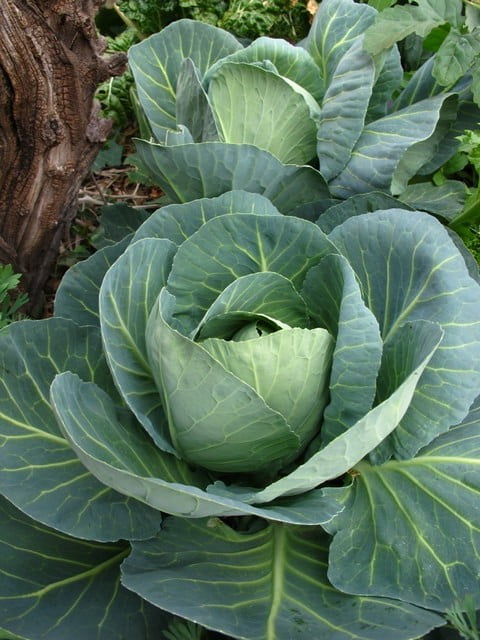 Cabbages like full sun and consistent moisture throughout their growing period. A good way to protect cabbages from leaf-eating bugs is to sprinkle of tansy, feverfew, artemisia or pyrethrum in amongst their leaves. More than most vegetables, cabbages benefit from polyculture plantings instead of monoculture. Interplanting with dill, coriander, anise, oregano, borage, nasturtium, sage and thyme will repel leaf-eating insects and camouflage the distinctive shape of the cabbage.
Cabbages like full sun and consistent moisture throughout their growing period. A good way to protect cabbages from leaf-eating bugs is to sprinkle of tansy, feverfew, artemisia or pyrethrum in amongst their leaves. More than most vegetables, cabbages benefit from polyculture plantings instead of monoculture. Interplanting with dill, coriander, anise, oregano, borage, nasturtium, sage and thyme will repel leaf-eating insects and camouflage the distinctive shape of the cabbage.
How to grow broccoli
Broccoli is a superhero when it comes to packing a nutritional punch. It contains high levels of vitamins, calcium, beta-carotene, potassium and iron. When buying seedlings, choose compact ones rather than tall leggy ones, as these will transplant more smoothly. If you crowd the plants closer, the heads will be smaller. Keep an eye out for leaf-eating bugs which can damage the central growing point, especially when the seedlings are small.
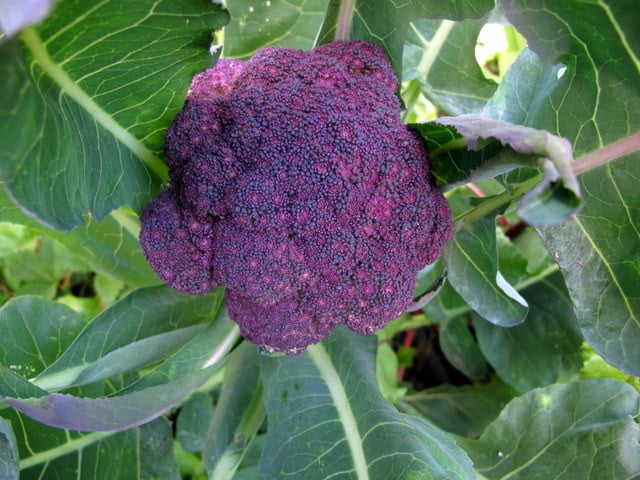
Purple broccoli
Harvest the central head while compact, even if it’s quite small. If it starts looking loose, cut it immediately otherwise the buds will open and flower. Cut it about 10 cm below the head. As the weather becomes cooler it will continue producing side shoots. Harvest them before they flower, otherwise the plant will stop producing any more shoots.
Rhubarb drench to help prevent club root in Brassicas
500 g (a bit over 1lb) rhubarb leaves, chopped
1 litre (1½-2 pints) of water
Boil leaves in 1 litre of water for 30 minutes. Cool and strain. Can keep in the fridge for up to two weeks.
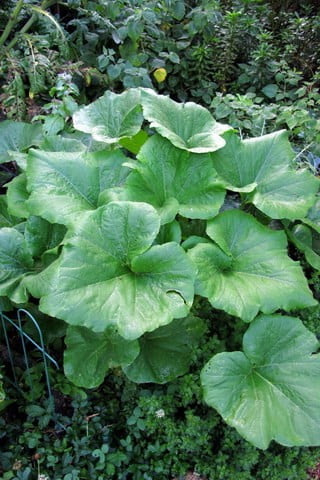
Use your rhubarb leaves to make a drench to help prevent club root in Brassicas
